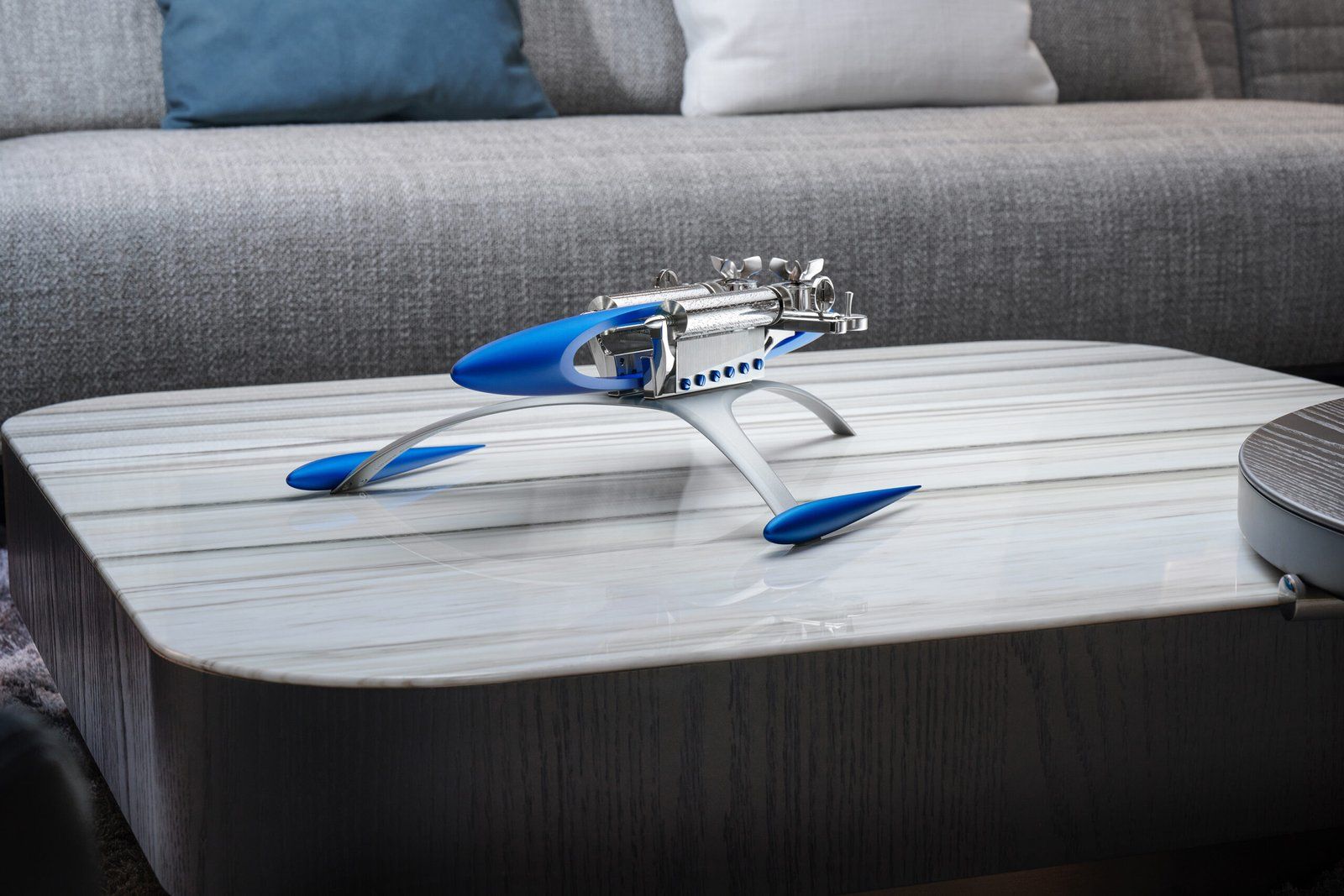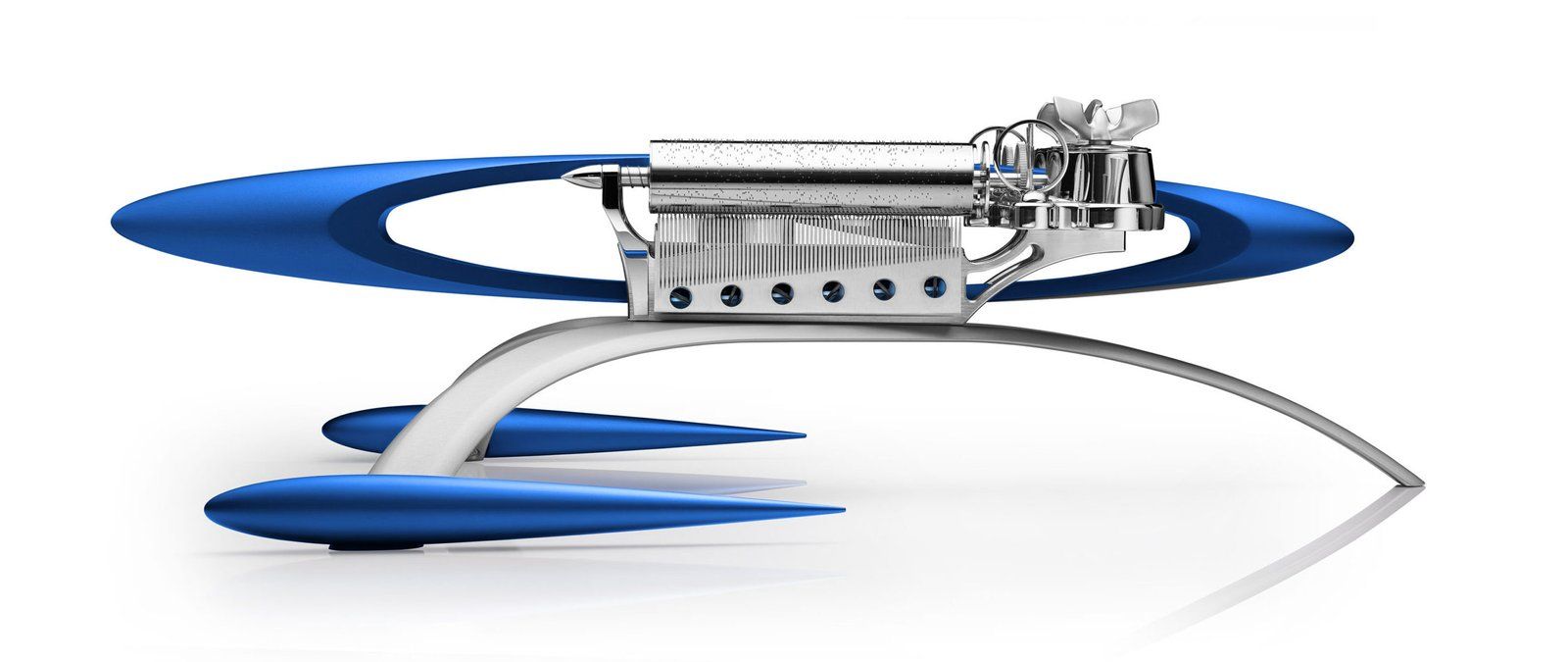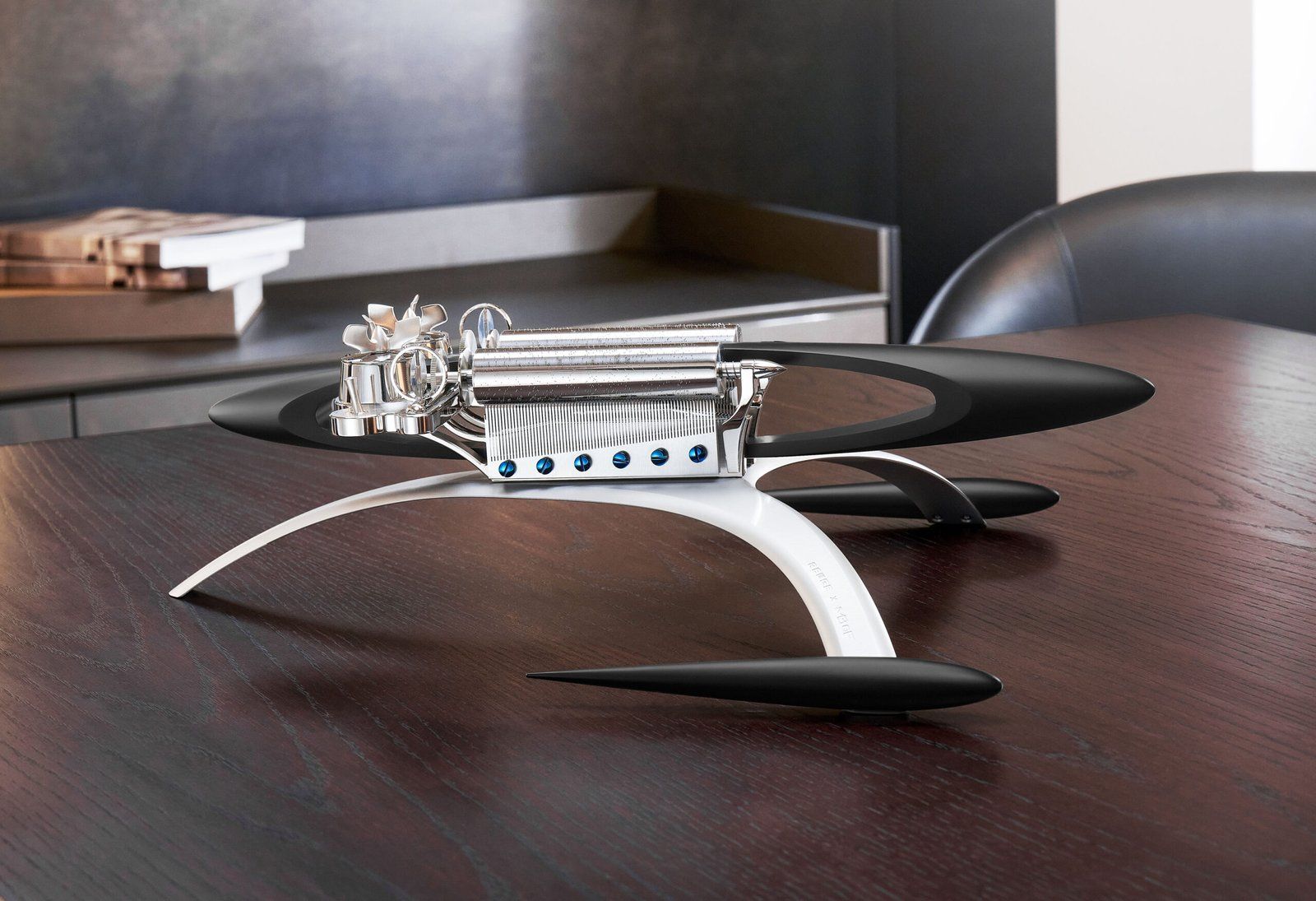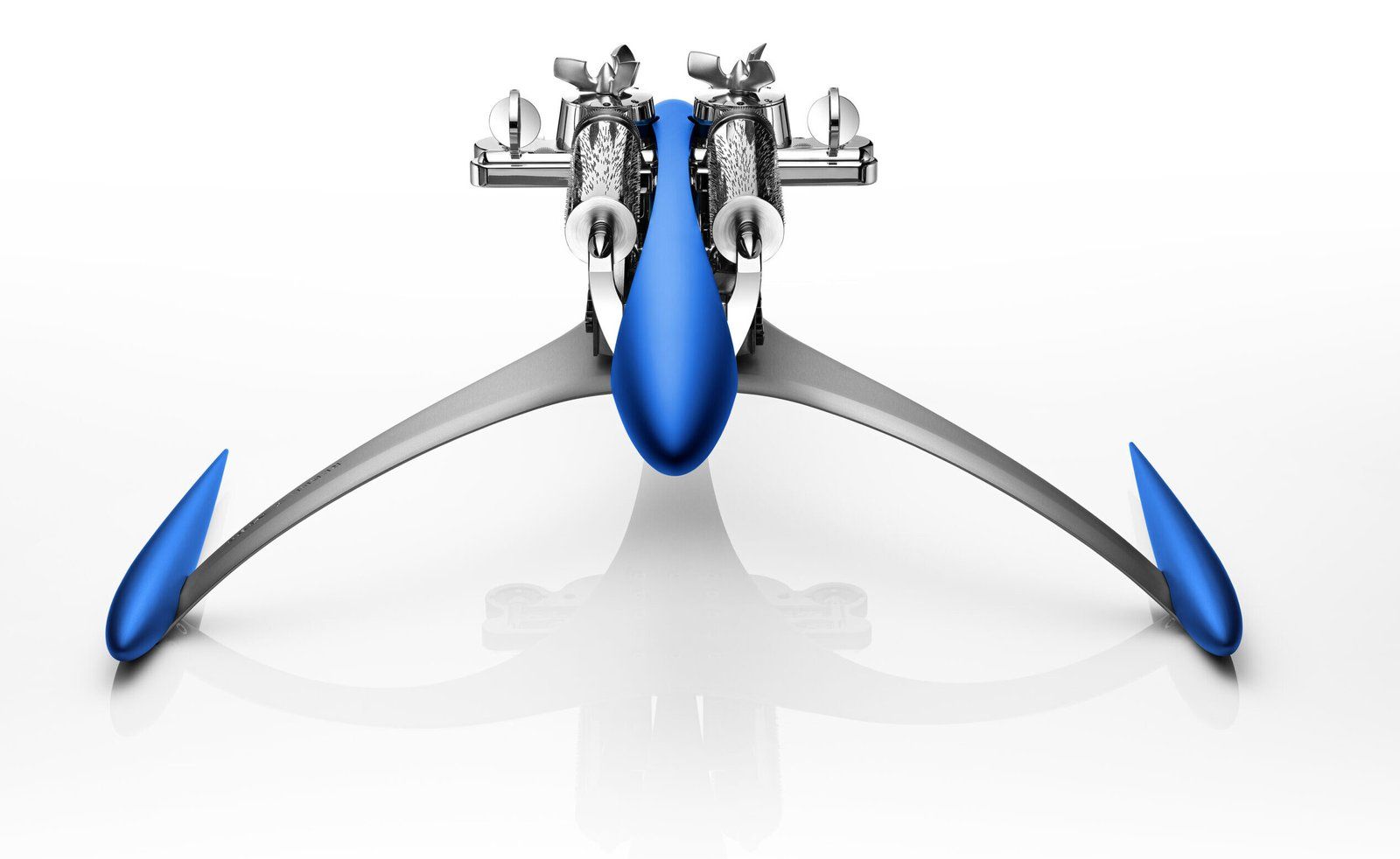MB&F X REUGE’s Music Machine Reloaded 1 Faithfully Creating Music
Have you ever viewed music boxes in a different way? A distinctive style and high-end music box? Well, MusicMachine 1 launched a new category – "Co-creations" – in 2013, allowing MB&F to interact with external creators on projects outside the scope of the wristwatch. It wasn't a timepiece, either: it was a REUGE-designed music box that challenged everything we thought we knew about music boxes, from the design to the music.
"How you construct a music box is still mind-boggling for the normal mortal," says MB&F inventor Maximilian Büsser, who is still amazed by the machines' physics. Technically and aesthetically, high-end mechanical music boxes are similar to their horological counterparts, with similar exquisite finishing techniques. Energy is obtained from coiled springs and transported through gear trains in the MusicMachine 1 Reloaded; the unwinding speed is carefully controlled, thanks to fan regulators similar to those found in traditional minute repeater watches. Two cylinders, each containing the "scores" of the tunes, are set in motion by 1,400 precision-placed pins. When the cylinders revolve, the pins pluck the teeth of steel combs, each containing a bespoke selection of 72 hand-tuned notes. Each comb forms a unique pair with its corresponding cylinder; neither can play properly without the other.
With more than 155 years of knowledge and experience, REUGE was founded in 1865 in Sainte-Croix, Switzerland, and is now the world's leading manufacturer of music automatons. MB&F and REUGE released three MusicMachines between 2013 and 2015, each playing a different song — unconventionally, modern music – and each model was a success. Maximilian Büsser and his associates decided it was time to rework the original MusicMachine and republish it in a new edition.
With its dual propellers and twin silver cylinders mounted on sleek outrigger landing gear, MusicMachine 1 Reloaded still looks like a spaceship hailing from a galaxy far, far away. Just slightly different than before.
Like the original version, each of the cylinders on MusicMachine 1 Reloaded plays three tunes, all personally selected by Maximilian Büsser. The left cylinder plays the Star Wars theme, “Imperial March” from The Empire Strikes Back, and the theme from Star Trek. Back on earth, the right cylinder plays Pink Floyd’s “Another Brick in the Wall,” Deep Purple’s “Smoke on the Water,” and John Lennon’s “Imagine.”
MusicMachine 1 Reloaded is a limited edition of 33 pieces in blue, 33 pieces in red, and 33 in black.
Updated, organic, aerodynamic design
MusicMachine 1 Reloaded was designed by REUGE based on a future spaceship design proposed by MB&F, whose founder, Maximilian Büsser, is a big fan of all the great sci-fi movies and TV shows. MB&F evolved Xin Wang's original spaceship design in collaboration with ECAL design graduate Max Maertens, while cleverly incorporating all the essential music box features like musically tuned combs, pinned cylinders, winding mechanisms, mainspring barrels, regulators, and an acoustically optimized case.What Büsser and Maertens have created is more visually organic than the original MusicMachine, with the young Berlin-based designer additionally introducing the concept of what he calls “more airflow.”
The MusicMachine series is really important for Max Maertens, even an inspirational stepping stone of sorts. When he first saw the original MusicMachine back in about 2015 as a design student, it inspired him to change his direction and way of thinking. So it was something of a dream come true for him to work on a redesign of precisely this piece. “But I made it into something that is more aerodynamic, more like my own design language,” he explains. This involved Maertens using more science as a base and looking to aerospace engineering. “The entire piece is in kind of a flow,” he says. This is especially visible in the wings, which now look as if they are in a wind tunnel with invisible airflow around them.”
The basic framework of MusicMachine 1 Reloaded hasn't changed much, although Maertens has reworked a few critical parts. In contrast to the original MusicMachine, which was composed of wood, the entire body is now made of anodized aluminium. He describes the process of cutting aluminium as "so appealing, so accurate, and its surface is so lovely." But the essential point is that Maertens intended to make each element of MusicMachine 1 Reloaded look like it was fused together.
The Music
MusicMachine 1 Reloaded isn't only designed to appear like something out of a science fiction film; three of the tunes are taken straight from science fiction classics.The left cylinder of the MusicMachine 1 Reloaded plays Jerry Goldsmith's Star Trek theme, as well as the Star Wars theme and the "Imperial March" from The Empire Strikes Back, both composed by cinematic music composer John Williams. While the first two are powerful anthems of valor and adventure, the third will have you battening down the hatches and raising your shields as it heralds the coming of Darth Vader, the enemy.
But MB&F is much more than sci-fi; the brand’s creations are edgy and iconoclastic relative to the rest of the high-end watch world. This rock ‘n’ roll attitude is neatly symbolized by the three melodies of the right cylinder: John Lennon’s classic anti-war anthem “Imagine,” Deep Purple’s riff-tastic “Smoke on the Water,” and Pink Floyd’s memorable social commentary “Another Brick in the Wall.”
Faithfully creating music… mechanically
The melodies were mechanically recreated using REUGE. To begin, a REUGE musician listened to each piece of music and identified the most memorable sections. The musician then set about reproducing these sequences for the music box, bearing in mind that one cylinder would have the three rock melodies and the other would contain the three sci-fi influenced melodies, with each cylinder's pins plucking one 72-note comb.Working out two groups of three arrangements, each one limited to about 35 seconds, and the plethora of notes that these songs entail (some notes are used by all three melodies, while others are exclusive to only one melody) represents a significant technical and artistic achievement in which the musician's brain, sense of expression, and emotional dexterity top the list.
MusicMachine 1 Reloaded has two independent movements, each comprising a winding propeller; a mainspring barrel (looking like a piston under the propeller); a horizontal cylinder with pins creating three melodies; and a vertical comb with individual hand-tuned teeth sounding each note. While it would have been much easier to duplicate the two movements and just change the melodies, MB&F's original concept called for perfect symmetry, and if the movements were identical the comb on one cylinder would not be on the outside. So REUGE took the unprecedented step of configuring the two movements as mirror images of one another, which meant completely inverting the design of the movement components and architecture.
The combs
The two vertical combs on either side of the vessel's main body resemble air vent grills. Each comb comprises a custom-made selection of 72 notes chosen by a REUGE artist based on the three melodies that will be played on that cylinder. The combs are hand-tuned from a special steel alloy chosen for their acoustic properties. The traditional way of adding lead extends the weight of the tooth towards the back for bass notes. The frequency of each tooth is then tested on a machine, and minute amounts of material are removed to precisely tune each note. REUGE created all of the hand-operated tools used in this procedure in-house.The cylinders
The beautifully hand-finished cylinders gleam like a pair of imposing reactors atop MusicMachine 1 Reloaded’s main hull. The cylinders essentially contain ‘the scores’ of the melodies, with as many as 1,400 precision-placed pins that pluck the teeth of the comb as the cylinder revolves. The REUGE musician determines precisely where to place every single pin. The pins are shaved and then polished to ensure uniformity of length. Finally, a special hot resin is applied inside the cylinder, which, when hardened, rigidly fixes the pins to maximise sound quality.Once one melody is played, the cylinder moves slightly along its long axis, and this change of position aligns the right pins with the right teeth to play the next melody. Each melody lasts approximately 35 seconds and corresponds to one complete revolution of the cylinder. The cylinders are linked via visible gear trains to MusicMachine 1 Reloaded's rear engine room.
Fan regulators
On either side of the propeller-like winding levers are distinctive vertical circular panels. While these look as though they may be radar dishes to navigate an asteroid field or force field generating devices to repel enemy proton torpedoes, they are actually the cylinder speed regulators. When fully wound, the main springs tend to turn the cylinders faster than when nearly unwound. To compensate, these circular fan air regulators provide exponentially more resistance when rotating faster than slower, allowing for a constant revolution.Fuselage, struts, landing pods and landing platform
The MusicMachine 1 Reloaded's sleek fuselage, made of blue, red, or black anodized aluminium, enhances music delivered from the brass vibration plate centrally located within the box. This plate also transmits vibrations to the MusicMachine 1 Reloaded's landing platform through curved, lateral struts and outrigger-style landing pods made of bead-blasted, anodized aluminium."I think it's a good idea." Amr Alotaishan sums up the emotion MusicMachine 1 Reloaded evokes in him: "If I had nothing to do with this firm, I would consider buying it." "By magically altering traditional crafts, we offer them to a younger, up-and-coming world, where they find curiosity as well."
No articles found












